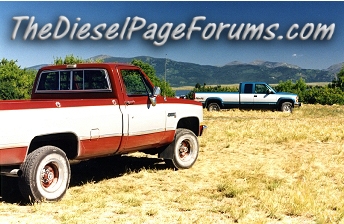 Fuel Cooler
Fuel Cooler
Mark,
Have you ever crawled under your truck and cleaned your fuel cooler? About every 10k milles I spray my fuel cooler with Gunk degreaser and pressure wash it. I am always surprised by the amount of road grime that comes off of it. If your fuel cooler hasn't been cleaned recently, it could be causing high-fuel temperatures under high-power applications.
Good Luck,
John
Last edited by CoyleJR; 04-14-2010 at 23:17.
*2006 Chevy, 3500, 4X4, DRW, (LBZ) D/A, CC, LT, 252K Miles, 19.5" Wheels, Mag Hytec Transmission Pan and Differential Cover, SS Grill Guard, Racor 2 micron aux fuel filter, 100 Gallon Aux Fuel Tank, using Edge Evolution, Predator Diablosport, Kennedy ECM tune, Fitch Fuel Catalyst.
*2006 Four Winds, Dutchman, 36', RV, D/A, 5500 Kodiak.
*1993 Harley Davidson, Turbo charged, Springer Softail.
*2007 Pontiac Solstice.
*2005 Jeep, Liberty, CRD (diesel).
*Full-timing in USA, see America first.
BUY AMERICAN or CANADIAN, NOTHING from CHINA .






 Reply With Quote
Reply With Quote







